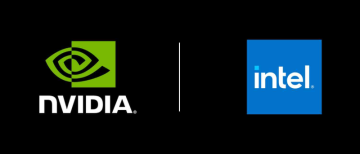In today’s rapidly evolving digital landscape, organizations are increasingly leveraging cloud computing to drive innovation, agility, and competitive advantage. However, as cloud adoption accelerates, so do the complexities and risks associated with managing digital identities and ensuring secure access to critical resources. Identity and Access Management (IAM) has emerged as a cornerstone of cloud security, playing a pivotal role in safeguarding sensitive data, maintaining regulatory compliance, and enabling seamless digital experiences.
The End of the Traditional Security Perimeter

Traditionally, enterprise security was built around the concept of a well-defined perimeter—firewalls, VPNs, and on-premises controls protected internal networks from external threats. However, the rise of cloud computing, remote work, and mobile access has rendered this perimeter obsolete. Users, devices, and applications are now distributed across multiple locations, networks, and cloud environments, making it impossible to rely on traditional perimeter defenses alone.
Identity as the New Security Perimeter
In this new paradigm, identity has become the primary control point for security. IAM solutions are designed to manage who (or what) can access which resources, under what conditions, and for how long. By focusing on identity, organizations can enforce security policies consistently across all environments, regardless of where users or applications reside.
Why IAM Is Indispensable in Cloud Computing
1. Centralized Control and Visibility
IAM provides a unified platform for managing user identities, authentication, and authorization across cloud and hybrid environments. This centralized approach simplifies administration, reduces the risk of errors, and enhances visibility into who is accessing what, when, and from where. With granular controls and real-time monitoring, organizations can quickly detect and respond to suspicious activities.
2. Preventing Unauthorized Access
Cyber threats are becoming more sophisticated, with attackers constantly looking for vulnerabilities to exploit. IAM solutions incorporate advanced security mechanisms such as multi-factor authentication (MFA), privilege management, and risk-based authentication to ensure that only authorized users can access sensitive data and applications. By enforcing strict access controls, IAM minimizes the risk of data breaches and insider threats.
3. Regulatory Compliance

Compliance with data protection regulations such as GDPR, HIPAA, SOX, and CCPA is a top priority for organizations across industries. IAM helps businesses meet these requirements by maintaining detailed audit logs, enforcing access policies, and protecting sensitive data. Automated compliance reporting and policy enforcement further reduce the administrative burden and ensure ongoing adherence to regulatory standards.
4. Scalability and Productivity
As organizations grow and adopt more cloud services, the number of users, devices, and applications increases exponentially. IAM solutions are designed to scale seamlessly, automating user provisioning, deprovisioning, and access management. This not only improves security but also enhances productivity by reducing manual administrative tasks and enabling seamless user experiences.
5. Business Continuity and Resilience
IAM plays a critical role in ensuring business continuity by minimizing the risk of unauthorized access and data breaches. By maintaining strict access controls and monitoring for anomalies, IAM helps organizations protect critical systems and data, ensuring uninterrupted operations even in the face of evolving threats.
Key Trends Shaping IAM in 2025 and Beyond

1. Zero Trust and Least Privilege
The Zero Trust security model is gaining widespread adoption, driven by the need to verify every access request, regardless of location or network. Combined with the principle of least privilege, which restricts users to only the resources they need, Zero Trust significantly reduces the attack surface and enhances overall security posture.
2. Enhanced Multi-Factor Authentication (MFA)
While MFA is now considered a basic security requirement, advanced MFA methods are emerging, including biometric authentication, device context, and behavioral analytics. These technologies add extra layers of security, making it even harder for attackers to compromise user accounts.
3. Machine Identity Management
As organizations embrace automation, the number of non-human identities—such as devices, APIs, and microservices—is growing rapidly. Machine Identity Management is becoming a critical component of IAM, ensuring that automated processes are secure and compliant.
4. Decentralized Identity and Self-Sovereign Identity
Emerging technologies like blockchain are enabling decentralized identity solutions, giving users more control over their personal data. Self-sovereign identity empowers individuals to manage and share their identity information securely, without relying on centralized authorities.
5. AI and Analytics-Driven IAM
Artificial intelligence and advanced analytics are transforming IAM by enabling proactive threat detection, automated policy enforcement, and adaptive access controls. AI-driven IAM solutions can analyze user behavior, detect anomalies, and respond to threats in real time, making security systems more intelligent and resilient.
Real-World Applications and Benefits

1. Secure Remote Work
With the rise of remote and hybrid work, IAM ensures that employees can securely access corporate resources from anywhere, on any device, without compromising security.
2. Cloud Migration and Hybrid Environments
As organizations migrate to the cloud or adopt hybrid architectures, IAM provides a consistent security framework across on-premises and cloud environments, simplifying management and reducing risk.
3. Customer Identity and Access Management (CIAM)
IAM solutions are also being used to manage customer identities, enabling secure and seamless digital experiences for users while protecting their personal data.
IAM as a Business Imperative

Identity and Access Management is no longer just a technical requirement—it is a strategic business imperative. As cloud computing becomes the foundation of digital transformation, IAM stands as the linchpin of enterprise security, enabling organizations to operate securely, efficiently, and in compliance with global regulations.
Investing in modern IAM solutions is essential for any organization looking to thrive in the cloud era. By adopting advanced IAM practices and staying ahead of emerging trends, businesses can protect their most valuable assets, empower their workforce, and deliver exceptional digital experiences to their customers.
With inputs from agencies
Image Source: Multiple agencies
©️ Copyright 2025. All Rights Reserved. Powered by Vygr Media.
























